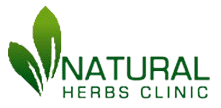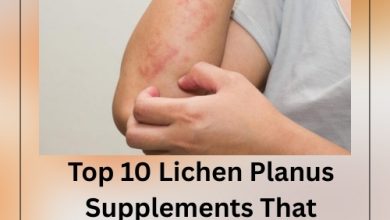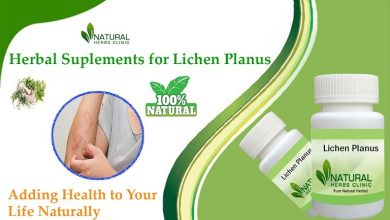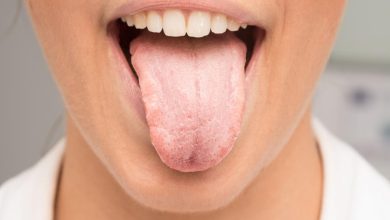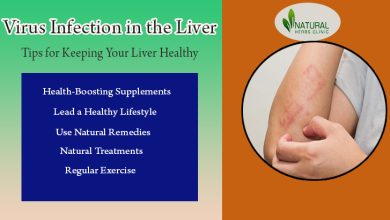Eating Well with Oral Lichen Planus: Your Food Choices Explained

Oral lichen planus can make eating a challenge. You experience painful lesions and a burning sensation, making even simple meals difficult. I know how frustrating this feels. As someone who has researched deeply into how our bodies react to food, I understand the significant impact diet can have on chronic conditions like oral lichen planus. While no single oral lichen planus diet cure exists, I will show you how specific food choices can significantly reduce discomfort and support your overall well-being.
Your mouth, the gateway to your digestive system, reacts directly to what you eat and drink. For those living with oral lichen planus, this reaction can manifest as increased pain, inflammation, and irritation. I have seen firsthand how carefully selected foods can soothe symptoms, while others worsen them. This article provides a clear, actionable guide to managing oral lichen planus through your diet, offering practical advice you can implement today. You will learn about foods to embrace and those to limit, all aimed at helping you find relief and improve your quality of life.
What Exactly Is Oral Lichen Planus?
Oral lichen planus (OLP) is a chronic inflammatory condition affecting the mucous membranes inside your mouth. You might notice white, lacy patches; red, swollen tissues; or open sores. These lesions can appear on your gums, tongue, inner cheeks, and even your lips. While the exact cause remains unclear, doctors believe it is an autoimmune condition where your immune system mistakenly attacks healthy cells in your mouth. Stress, certain medications, and genetic predisposition may trigger or exacerbate OLP.
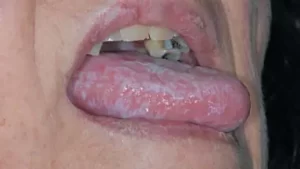
Living with OLP means dealing with symptoms like a burning sensation when you eat, sensitivity to hot or cold foods, and sometimes even pain that interferes with speaking and swallowing. I understand that these symptoms can make mealtimes a source of dread rather than enjoyment. My goal is to empower you with dietary strategies that can help you manage these symptoms effectively.
How Does Diet Influence Oral Lichen Planus?
Your diet plays a crucial role in managing inflammatory conditions. What you consume directly impacts your body’s inflammatory response and overall immune function. For example, some foods can promote inflammation, making your OLP symptoms worse. Conversely, other foods possess anti-inflammatory properties, which can help calm your immune system and reduce irritation in your mouth. This isn’t about finding an oral lichen planus cure diet; it’s about finding a diet for oral lichen planus that supports healing and reduces discomfort.
Consider the delicate balance within your body. When you introduce irritants, your immune system ramps up its defence, potentially leading to increased inflammation in vulnerable areas like your oral tissues. By carefully choosing what you eat, you can minimise these triggers and provide your body with the nutrients it needs to repair itself and maintain a healthier oral environment. I have seen patients achieve significant symptom reduction by making thoughtful changes to their eating habits.
Foods to Avoid When You Have Oral Lichen Planus
Limiting or eliminating certain foods can bring substantial relief from OLP symptoms. I have found that these items often act as direct irritants or promote systemic inflammation.
- Spicy Foods: Chilli peppers, hot sauces, and strong spices like cayenne can cause immediate burning and pain on already sensitive oral lesions. I advise you to avoid them entirely, especially during flare-ups.
- Acidic Foods and Drinks: Tomatoes, citrus fruits (oranges, lemons, grapefruit), vinegar, and fizzy drinks are highly acidic. They erode tooth enamel and irritate delicate oral tissues, intensifying the burning and soreness associated with OLP. Even seemingly healthy options like fruit juices can be problematic due to their acidity. I recommend you dilute fruit juices significantly or choose less acidic alternatives.
- Crunchy and Abrasive Foods: Hard crusts, crisps, nuts, and some raw vegetables can physically abrade your oral lesions, causing pain and further damage. You should opt for softer textures, especially when your mouth is particularly sensitive.
- Alcohol: Alcohol is a known irritant to mucous membranes and can exacerbate inflammation. I strongly recommend you limit or avoid alcoholic beverages.
- Very Hot or Very Cold Foods and Drinks: Extreme temperatures can trigger pain and discomfort in your sensitive mouth. Allow hot foods and drinks to cool slightly, and avoid excessively cold items. Lukewarm options are often best.
- Processed Foods and Refined Sugars: These foods often contain additives, preservatives, and high levels of sugar, all of which can contribute to systemic inflammation and potentially worsen autoimmune responses. Biscuits, cakes, sugary drinks, and ready meals fall into this category. I encourage you to read food labels carefully.
- Potential Allergens: For some individuals, food allergies or sensitivities can trigger or worsen OLP. Common culprits include gluten, dairy, and soy. While not universal, I have observed cases where eliminating these foods for a trial period helped improve symptoms. If you suspect an allergy, I recommend you discuss this with your doctor or a dietitian. To learn more about identifying specific food sensitivities, you will find comprehensive guidance in our article, “Understanding Your Body’s Reactions to Food.”
By removing these common triggers, you give your oral tissues a chance to heal and reduce the frequency and intensity of your OLP flare-ups. This isn’t about deprivation; it’s about smart choices for your comfort.
Foods to Include for Oral Lichen Planus Support
Focusing on nutrient-dense, anti-inflammatory foods can significantly aid in managing your oral lichen planus. Your goal is to nourish your body and reduce inflammation systemically.
- Soft, Non-Acidic Fruits and Vegetables: Incorporate options like bananas, melons, cooked carrots, sweet potatoes, and leafy greens (spinach, kale) into your diet. These provide essential vitamins, minerals, and antioxidants without irritating your mouth. You can blend them into smoothies for easier consumption if chewing is painful.
- Lean Proteins: Include chicken, turkey, fish (especially fatty fish rich in omega-3s like salmon and mackerel), and plant-based proteins such as tofu and legumes (if tolerated). Proteins are vital for tissue repair and immune function.
- Healthy Fats: Avocados, olive oil, flaxseed oil, and the omega-3s from fatty fish contribute to reducing inflammation throughout your body. I suggest you add a drizzle of olive oil to your cooked vegetables or incorporate avocado into your meals.
- Whole Grains (if tolerated): Opt for softer whole grains like cooked oats, quinoa, and brown rice. These provide fibre and sustained energy. Be mindful of their texture if your mouth is very sore.
- Dairy Alternatives (if sensitive to dairy): If you find dairy bothers your symptoms, try unsweetened almond milk, oat milk, or coconut milk.
- Probiotic-Rich Foods: Plain, unsweetened yoghurt (if dairy is tolerated), kefir, and fermented vegetables like sauerkraut (ensure they are not too acidic or spicy) can support gut health, which is closely linked to immune function. A healthy gut microbiome can help regulate your immune response.
This approach to oral lichen planus and diet focuses on calming your immune system and providing building blocks for healing. It is about supporting your body’s natural ability to recover.
Hydration and Oral Hygiene: Essential Companions
Beyond solid foods, what you drink and how you care for your mouth are equally important for managing oral lichen planus.
- Stay Hydrated: Drink plenty of plain water throughout the day. Water keeps your mouth moist, which can help reduce discomfort and aid in washing away food particles that might irritate lesions. I advise you to carry a water bottle with you.
- Gentle Oral Hygiene: While not directly dietary, maintaining excellent oral hygiene is crucial. Use a soft-bristled toothbrush and a mild, alcohol-free toothpaste. Harsh mouthwashes can irritate, so consider a saline rinse or one recommended by your dentist. Regular dental check-ups are also vital to monitor your condition and ensure early intervention for any complications.
Managing Symptoms Through Diet: Practical Tips
Implementing these dietary changes can seem challenging, but I have found a few practical strategies make it much easier.
- Keep a Food Diary: Track what you eat and drink, noting any changes in your OLP symptoms. This helps you identify personal triggers and beneficial foods. You might discover certain foods affect you differently than others.
- Prepare Soft, Bland Meals: Focus on soups, stews, pureed vegetables, and well-cooked, tender meats or fish. Smoothies can be an excellent way to get nutrients when eating is painful.
- Cool Foods Down: Let hot foods cool to a warm temperature before eating. This reduces the risk of burning your sensitive oral tissues.
- Chew Slowly and Thoroughly: This aids digestion and reduces the burden on your oral tissues.
- Avoid Eating Large Meals: Smaller, more frequent meals can be easier to manage than three large ones, especially during a flare-up.
- Experiment Gradually: Introduce new foods slowly and observe your body’s reaction. Don’t make drastic changes all at once.
- Spice Substitution: Instead of hot spices, use herbs like basil, oregano, thyme, and rosemary to flavour your food. These add flavour without irritation.
By adopting these practices, you can make your oral lichen planus diet treatment more effective and sustainable.
Beyond Diet: A Broader Approach to Managing OLP
While focusing on your best diet for oral lichen planus is incredibly beneficial, remember that diet is one piece of a larger puzzle. Oral lichen planus often responds to a multi-faceted approach. Stress management techniques like meditation or yoga can reduce flare-ups, as stress significantly impacts the immune system. Your doctor might also recommend topical corticosteroids or other medications to manage severe symptoms. I encourage you to view diet as a powerful tool within a comprehensive management plan.
Consulting Your Healthcare Professional
I cannot stress this enough: always consult your doctor, dentist, or a registered dietitian before making significant changes to your diet, especially when managing a medical condition like oral lichen planus. They can provide personalised advice based on your specific health needs, other medical conditions, and current medications. What works for one person may not work for another. They can also rule out other conditions that might mimic OLP symptoms and ensure you receive the most appropriate care. Your medical team is your best resource for guidance.
Conclusion: Empowering Your Choices with Lichen Planus Oral Diet
Living with oral lichen planus presents unique challenges, particularly around mealtimes. However, by adopting a thoughtful and deliberate approach to your diet, you can significantly reduce discomfort, manage symptoms, and improve your quality of life. While there isn’t a single oral lichen planus diet cure, embracing anti-inflammatory, soothing foods and avoiding common irritants empowers you to take an active role in your own care.
You have the ability to make choices that support your oral health. By focusing on gentle, nourishing foods and staying well-hydrated, you provide your body with the best chance to heal and maintain a calmer, less inflamed state. Remember the power in your food choices; they can be a source of comfort and healing rather than pain. Start today by making small, positive changes, and you will likely experience a noticeable difference in your journey with oral lichen planus.
Recommended Articles:
Lichen Planus Mouth Treatment: Innovative Solutions For Quick Relief
Lichen Planus Natural Alternative Treatment With Herbal Remedies
Top 10 Lichen Planus Supplements That Actually Work—#3 Will Surprise You!
Natural Remedies For Lichen Planus: Very Key In Reduce Skin Swelling
